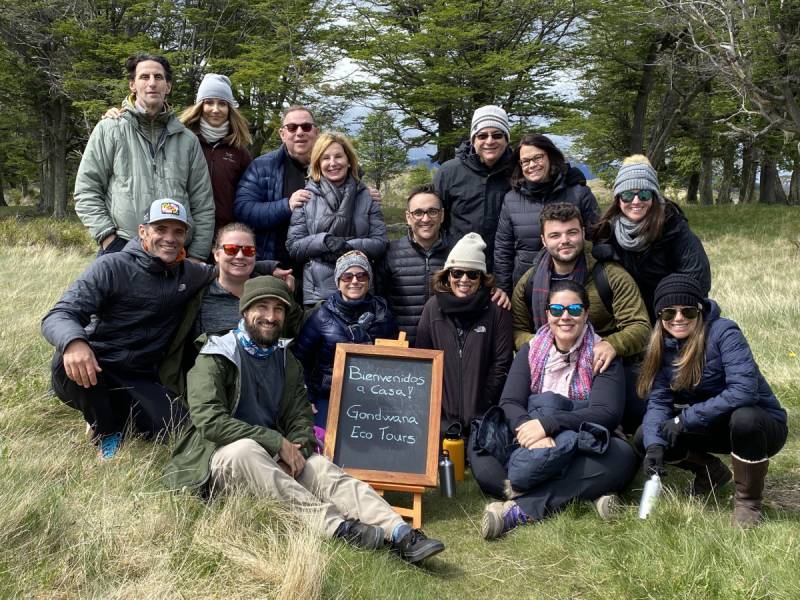Tanzania’s Amazing Wildebeest Migration
Download Travel Details >PRIVATE & SMALL GROUP TOURS TO THE WORLD'S BEST DESTINATIONS
Join Us For A Safari In Tanzania

Chasing Migrating Wildebeest In Tanzania!
The annual Wildebeest migration in Tanzania is one of the world's seven natural wonders and one of the most popular safari options in Tanzania! This breathtaking natural phenomenon involves millions of wildebeest crossing the vast plains of the Serengeti, accompanied by zebras and gazelles, in pursuit of fresh grazing and water. The cyclical journey is driven by the rhythm of the seasons. It takes the migrating wildebeest from the fertile plains of the Serengeti in Tanzania to the lush grasslands of the Maasai Mara in Kenya, and back home again.
Where Does The Great Wildebeest Migration Take Place?
This incredible annual wildebeest crossing takes place in northern Tanzania and southwestern Kenya. Since the great herd crosses back and forth between the two countries and through various ecosystems, both Tanzania and Kenya work together to protect the grazing lands the animals depend on for their survival. It’s a cross-border collaboration!
At first glance, it looks as though the migrating wildebeest and their followers are only traveling through the Serengeti National Park and Maasai Mara. However, the wildebeest migration takes place in the following five protected areas:
- Serengeti National Park (Tanzania)
- Ngorongoro Conservation Area (Tanzania)
- Loliondo Game Controlled Area (Tanzania)
- Grumeti Reserve (Tanzania)
- Maasai Mara National Reserve (Kenya)
Each of these five natural areas plays a singular role in the annual wildebeest migration. From the birth of the calves in the Southern Serengeti to the dramatic river crossing into the Maasai Mara, this incredible spectacle is a once-in-a-lifetime experience for safari-goers. Fortunately, there are many tour operators, like Gondwana Ecotours, offering fantastic safari packages to visitors so that they can follow the great herd as it crosses the Serengeti on its way to Kenya.
When Is The Best Time To See Migrating Wildebeest In Tanzania?
The Great Migration is a cyclical event, repeating itself year after year as the animals follow an internal clock that is set to an ancient rhythm. When you book a wildebeest migration safari package with a tour operator in Tanzania, they generally consider three factors: the weather, the crowds, and what aspect of the wildebeest crossing you want to see!
However, the best time to see the migrating wildebeest in Tanzania is during the dry season which falls between July and early October. During this time, the great herd will begin making the dramatic river crossings of the Grumeti and Mara Rivers. These river crossings are popular with safari-goers, most of who want to witness the drama of the wildebeest crossing the river while evading the snapping crocodiles along the shoreline.
Here’s a more detailed breakdown of the Great Migration in Tanzania throughout the year:
|
Time of year: |
What you will see: |
|
December to March |
|
|
April to May |
|
|
June and July |
|
|
July to October |
|
|
September to October |
|
|
November to December |
|
No matter which part of the Wildebeest migration you see on your safari adventure, this incredible spectacle is filled with drama. Lions, cheetahs, leopards, and crocodiles lie in wait along the route, eager to snatch up a straggler from the great herd for an impromptu feast. The ancient struggle for survival plays out across the sweeping plains of the Serengeti, with dramatic chases, intense battles, and sometimes staggering losses. Still, the migrating wildebeest repeat their journey year after year, determined to follow the path set out for them by their ancestors.
Following The Great Herd For Its Annual Migration
The Great Wildebeest Migration is unlike anything else on earth! Each year, more than two million animals begin their journey across the Serengeti and Maasai Mara. Most of the migrating mammals are wildebeests. However, a staggering number of zebras and different antelopes take part in this exodus each year, too. Here is a quick look at each animal you will see on safari during the annual wildebeest crossing.
- Wildebeests – approximately 1.5 million wildebeest, or blue wildebeest to be precise, take part in this annual migration. The herd is not one single herd; instead various herds of wildebeest separate, converge, and separate again as the migration moves on during the year.
- Zebras – each year, 200,000 Grant’s zebras travel alongside the wildebeests as part of the Great Migration. Grant’s zebras are a subspecies of the Plains zebra, with vertical stripes on their bodies and horizontal stripes on their legs.
- Antelopes – several species of antelopes join the wildebeest crossing each year. This includes Thomson’s gazelle, Grant’s gazelle, impalas, and the common eland.
Of course, predators seize the opportunity to find prey by following the Great Wildebeest Migration each year. Most notably, the lion – but leopards, cheetahs, and African wild dogs are known to trail the herd during its annual journey. Some predators don't stalk the migration, but take their opportunities when they come, like the crocodiles in the Grumeti and Mara Rivers.
Here's a list of the fearsome predators you will see along the way on a Great Migration safari:
- Lions - around 3,000 African lions will follow and stalk the herds of the Great Migration. Wildebeests and lions have the same maximum running speed of 50 miles per hour. Wildebeests can sustain this speed for longer, which helps them outrun the lions during their annual migration.
- Hyenas – although hyenas have a reputation for being scavengers, they actually kill most of their prey. Approximately 7,000 spotted hyenas travel with the wildebeest herd during the great migration to stalk the travelers!
- Crocodiles - Nile crocodiles pose a grave danger to wildebeests and other animals during the river crossings of the Great Migration. These crocodiles are enormous and can grow up to 17 feet in length.
On The Heels Of The Wildebeest Migration In Tanzania
One of the most amazing sights to behold is the giant herd of wildebeest and other mammals making their way across the great plains of the Serengeti during their annual journey from Tanzania to Kenya - and back again. Following the annual migration route is a breathtaking spectacle that showcases the resilience and determination of these incredible animals as they face various challenges along the way. And, when you book with a reputable tour operator like Gondwana Ecotours, you can leave the planning to the experts and enjoy your time in Africa!

